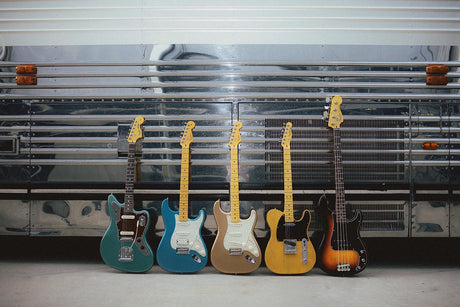Rickenbacker basses are really unique instruments – nothing else feels or sounds like one. They’re also incredibly versatile – you’ll see just as many indie players use them, as you will metal players. There are two models on the market – the Rickenbacker 4003 and the Rickenbacker 4003S, that look fairly similar and indeed sound almost the same too, but are priced differently. So what are the differences between the Rickenbacker 4003 and the 4003S?
Firstly, the Rickenbacker 4003 has binding that goes all the way around the body of the bass, whereas the 4003S doesn’t have any binding. Some people prefer the look of binding as it akes the instrument look a little more premium. Others on the other hand, prefer the feel of an unbound bass as they find it more comfortable to sit down with. The 4003 also has triangular fret markers, as opposed to dots on the 4003S – and there lie the differnces in aesthetics between the Rickenbacker 4003 and 4003S.
Both basses are fitted with the same pickups and have a maple body, with maple through neck design so they are going to same almost the same (different cuts of wood, setup and other variables will change how an instrument sounds very slightly). However, the Rickenbacker 4003 does have a tonal upgrade of sorts, when compared to the 4003S. The former has Rick-O-Sound; that is two output jacks that allow you to run the bass into a stereo rig – this is very useful if you’re going for a sound akin to Royal Blood / Death From Above 1979, or even if you’re going for the legendary Lemmy tone (check the video below). The 4003S just has a regular mono output jack.
And there you have it – those are the main differences between the Rickenbacker 4003 and 4003S. The difference is largely aesthetic, but for some players, having the Rick-O-Sound on the 4003 will give that a slight edge over its stripped-down younger brother.









